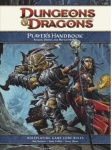You are using an out of date browser. It may not display this or other websites correctly.
You should upgrade or use an alternative browser.
You should upgrade or use an alternative browser.
D&D General Ray Winninger on 5e’s success, product cadence, the OGL, and more.
- Thread starter SlyFlourish
- Start date
- Status
- Not open for further replies.
mamba
Legend
and if things do not pick up after the MM then the next step is to say ‘but the SRD is not out yet, we have to see after that’.I guess that's where I'm seeing issues with alot of your comparrisons... the new edition isnt completely out yet... and imo that has to be skewing results.
Guess we will see how things go, I agree that we should not base it on one snapshot in time either way
Here's a point of comparison that underlines how important it is to remember that situations change:


It might seem hard to believe, but there was a time when the industry consensus was that 4e was a big hit. That changed. I'm not saying there's any reason to link the 4e launch to 5.5's rollout, but to instead remember that there is always a gap between what we know and what we will learn.


It might seem hard to believe, but there was a time when the industry consensus was that 4e was a big hit. That changed. I'm not saying there's any reason to link the 4e launch to 5.5's rollout, but to instead remember that there is always a gap between what we know and what we will learn.
Here's a point of comparison that underlines how important it is to remember that situations change:


It might seem hard to believe, but there was a time when the industry consensus was that 4e was a big hit. That changed. I'm not saying there's any reason to link the 4e launch to 5.5's rollout, but to instead remember that there is always a gap between what we know and what we will learn.
It was a big hit for a while in public games in my area and people seemed to be ready for a new take on the game. It just faded as people burned out on it quickly for multiple reasons. When 5 came along it broke the mold and we had the same uptick and then it just kept going because most of the early adapters stayed on and newbies also started showing up. I don't see how that's particularly relevant to current day though.
Considering some of the changes in policy such as categorization of the books on Amazon amongst others I don't know if we'll ever really know how well the game is doing outside of guessing unless and until it goes into a total tailspin. It's not like we had particularly good numbers before and now we have even less. Which can be frustrating of course especially for 3PP but that's why I'm going to continue to take any prognostications with a grain of salt.
in the case of the documentary they actually announced that it would be released for the 50th Anniversary.And you're criticizing WotC on "failing" to get tv shows and documentaries out the door? Projects that are complex and prone to delays at the best of times, with Hollywood facing its own struggles?
Now, betting on the producer/director going on anti-inclusive rants against WotC may have been an error.
Imaro
Legend
No... but we are comparing a time period where a complete game was available (2014) to one where a corebook is missing (2024)... The free rules are just as good as an srd so not sure that would be a big deal.and if things do not pick up after the MM then the next step is to say ‘but the SRD is not out yet, we have to see after that’.
Guess we will see how things go, I agree that we should not base it on one snapshot in time either way
WinningerR
Adventurer
Ray, as the architect of the 2024 edition, can you speak to what the impetus was for launching the new edition in 2020? Were sales starting to lessen that early in, or was something else the driver? (To be clear, nothing historically wrong with sales flattening... it's amazingly positive relative to D&D's history.)
Sales weren't decreasing. From 2014 until I left (and possibly beyond), D&D revenues grew every year and by double digits in most years. Sales on the PHB alone were at least steady, and probably growing slightly YoY, as well. (I equivocate because the number of units sold was certainly growing, but we don't know exactly how many of the digital units were selling to net new customers as opposed to purchasers who already bought physical copies.) Five years in, the 5E business was stable in a way that hadn't occurred with any previous edition.
The original goals for the new core books were: 1) improving accessibility, 2) upleveling the art, 3) fixing a small handful of long-time issues and bringing some subtle elements of the design more in-line with the current state of the art, 4) moving a few things from expansion products into the core, and 5) laying a better foundation for future expansion. Numbers #1-4 are pretty self-explanatory. Number #5 was about reorienting the game rules to fully embrace the idea that D&D is a multiverse composed of an infinite number of unique worlds. That meant further distancing lore from the rules in some cases and being very careful about canonizing definitive statements about, say, orcs because (we believed) there is no such thing as a "D&D orc;" there are "Forgotten Realms orcs," "Eberron orcs," even the orcs from countless homebrew campaigns, all of which may differ in fundamental ways.
We never endeavored to craft a "new edition." My original concept was to name Monsters of the Multiverse the fourth core book, revise the PHB in 2023, the DMG in 2024, the MM in 2025, and MotM in 2026. In 2027, we'd revise the PHB yet again. In other words, going forward, we would release a revised core book each year, and each core book would be refreshed every four years. The idea was to further boost D&D's balance sheet, but also establish a mechanism that allowed the game to continuously improve and evolve instead of forestalling innovation until we we could pull of a quantum "edition shift."
Of course, things didn't unfold that way. The C-Suite insisted we revise all the core books together and very much wanted to position this effort as a "new edition," not to boost sales but to help solve an orthogonal business problem that later became moot. We were also ordered to announce the new core books much earlier than we preferred. I was deeply concerned that announcing a "new edition" would crash vital backlist sales. Thus began the strange linguistic dance of trying to position these books as both "a new edition" and "not a new edition" at the same time. (For my money, they are absolutely not a "new edition.")
Alzrius
The EN World kitten
Mike, in your experience, how long does it take for that gap to be bridged? My (completely amateur) take on it has been that it takes roughly two years until we get a clear picture of how things shook out. Does that sound right to you?Here's a point of comparison that underlines how important it is to remember that situations change:


It might seem hard to believe, but there was a time when the industry consensus was that 4e was a big hit. That changed. I'm not saying there's any reason to link the 4e launch to 5.5's rollout, but to instead remember that there is always a gap between what we know and what we will learn.
WinningerR
Adventurer
Thanks, that's a great point. The coupon in Essentials Kit was a successful experiment. The reason it wasn't repeated was that for much of my tenure, our relationship with DDB was in question. The negotiations that led to the acquisition started a long time before they came to fruition.I appreciate the insight. I did have a question about the Starter Sets though. A lot of people have been asking for a way to get a digital copy on DDB of books purchased at places like FLGS and I do understand that is a complicated problem so I won't get into that, but I do want to ask about that concept for the Starter Set boxed sets. The Essentials Kit came with a code in the box to get the Dragon of Icespire Peak adventure on DDB for free and also provided a 50% off coupon for the PHB. As someone who was skeptical of DDB at the time, it got me to make an account and use both codes to check the platform out. And it worked because I ended up liking what I saw and spending a couple hundred dollars rebuying stuff I already owned in print over the next few years. The noteworthy thing at the time was WotC had not yet purchased DDB, so there had to be cooperation between both companies to make that promo happen. It would be like WotC including a coupon for Roll20 copies of the 2025 Starter Set adventure when that releases.
Is there a reason that a similar promo was not done for the Dragon of Stormwreck Isle Starter Set? Since the set is designed to on-board new players, also on-boarding them to the digital platform seems like it would have been a good thing so I'm curious if there was a reason this didn't happen.
mamba
Legend
they aren’t as good when it comes to you creating content that includes parts of them…The free rules are just as good as an srd so not sure that would be a big deal.
The free rules are maybe good for having people try the game, when it comes to creating content for it, I do not believe they matter, the core books already make them redundant
- Status
- Not open for further replies.
Similar Threads
D&D 5E (2024)
The Ray Winninger Era of D&D 5e
- Replies
- 61
- Views
- 9K
- Replies
- 77
- Views
- 13K
- Replies
- 96
- Views
- 24K
- Replies
- 77
- Views
- 12K
- Replies
- 18
- Views
- 6K
